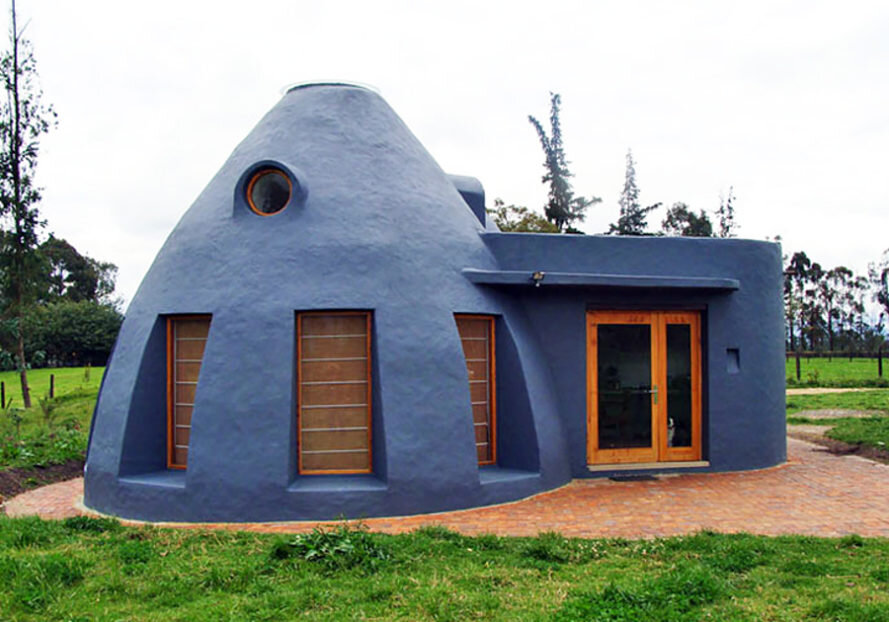
There are countless things you can do to make your living space more eco-friendly, but what would it be like to live in a home that is inherently better for the environment? In honor of Earth Day, we’ve crafted a list of six super-sustainable home types that incorporate green home design principles in order to be energy-efficient and low-impact on the planet, inside and out.
1.Earthship
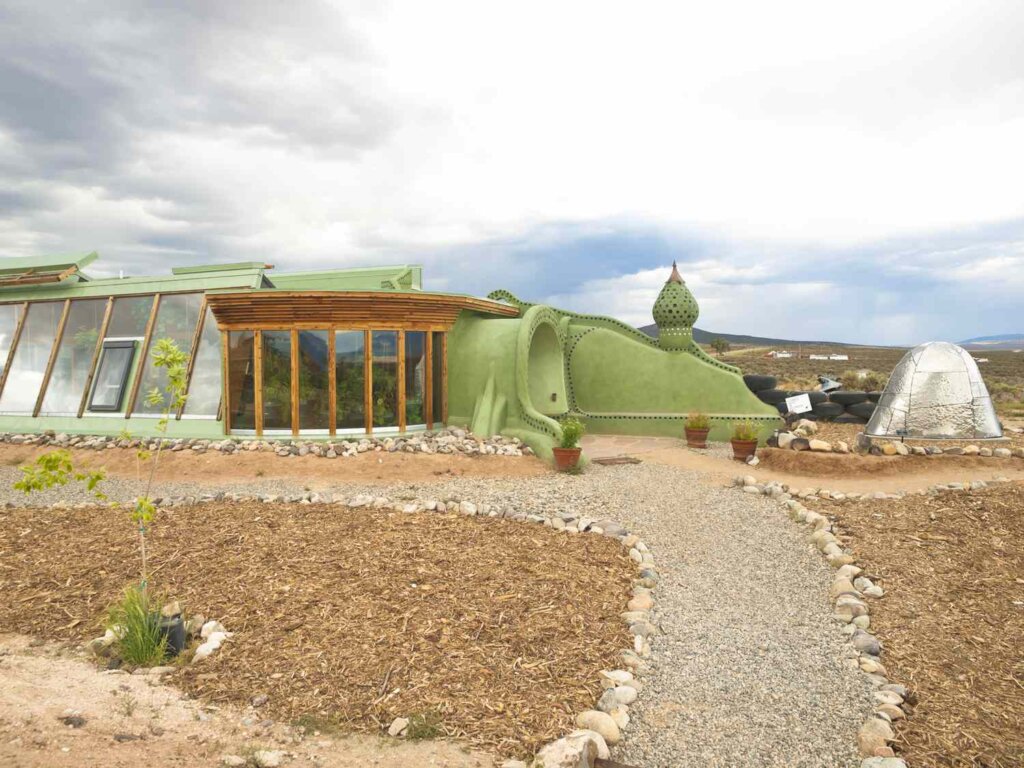
While an “Earthship” home might sound like something that’s straight out of a sci-fi movie, it’s actually a real home model that’s becoming more popular, particularly in states like New Mexico. “Earthship” — a term coined by self-proclaimed “biotect” Mike Reynolds — refers to homes that are responsibly constructed out of earthen materials and built into the ground. First built in the 1970s, these zero-waste homes generate their own electricity and collect their own water.
Earthship designers focus on six specific principles that guide the creation of Earthship homes, according to Andy Bratz, designer and president of Biotecture Planet Earth, a nonprofit that promotes Earthships: building with recycled and natural materials, water harvesting, food production, thermal solar heating and cooling, solar and wind energy and contained sewage treatment. Let’s explore some of these principles a little further:
Recycled materials
Earthships are built using common recyclables such as bottles, cans and tires. “There is a lot that goes into building an Earthship,” Bratz said. Bratz has 1,200 tires in his Earthship home — enough to be recycled from 300 cars — and each tire is individually filled with cardboard and dirt. Another layer of labor comes into the equation if bottles are used. At Bratz’s home, he has two walls that are made out of a combined 1,700 bottles that were all individually cut, cleaned and categorized for a specific design.
Water harvesting
Not only do Earthships produce their own water and energy but they also treat the sewer onsite. Earthships use water four times, “which is more than any other structure I have seen in the 30 years I have been designing homes,” Bratz said.
So how does this work? At Bratz’s Earthship home, the metal roof collects rainfall and precipitation that is stored in four cisterns, which gives him and his wife 6,800 gallons of water to use. That water then comes into the utility room and is filtered separately for the first use —water used for bathing and washing, as well as for the kitchen sink and laundry.
Then, all of the grey water goes to two reception cells, which is taken to the top of the garden. There, the water flows downhill while going through the peat moss and gravel. This feeds the house’s greenhouse plants for second use before it ends up at the pump on the other side of the house, waiting to fill the toilets for a third usage point. All of the black water from the toilets goes directly into the septic tank and eventually heads to the septic leach line that provinces water for exterior yard plants for the fourth and final use.
Thermal solar heating and cooling
Through a combination of passive solar heating and thermal mass, Earthships use the sun to heat the house and the Earth to cool it, which avoids using fossil fuels. By using a natural ventilation system, outside air is drawn in through underground vent tubes, which are buried in an effort to cool the air. Those tubes enter the home on the backside, allowing air to flow through the house.
Bratz was initially drawn to Earthships because of the idea of “being off the grid 100%,” building with recycled materials and lowering his carbon footprint. He added that he likes not having to rely on anyone or any company for utilities or services. With an Earthship home, he feels that he’s able to be “independent from the system at an affordable price.”
2. Cob house
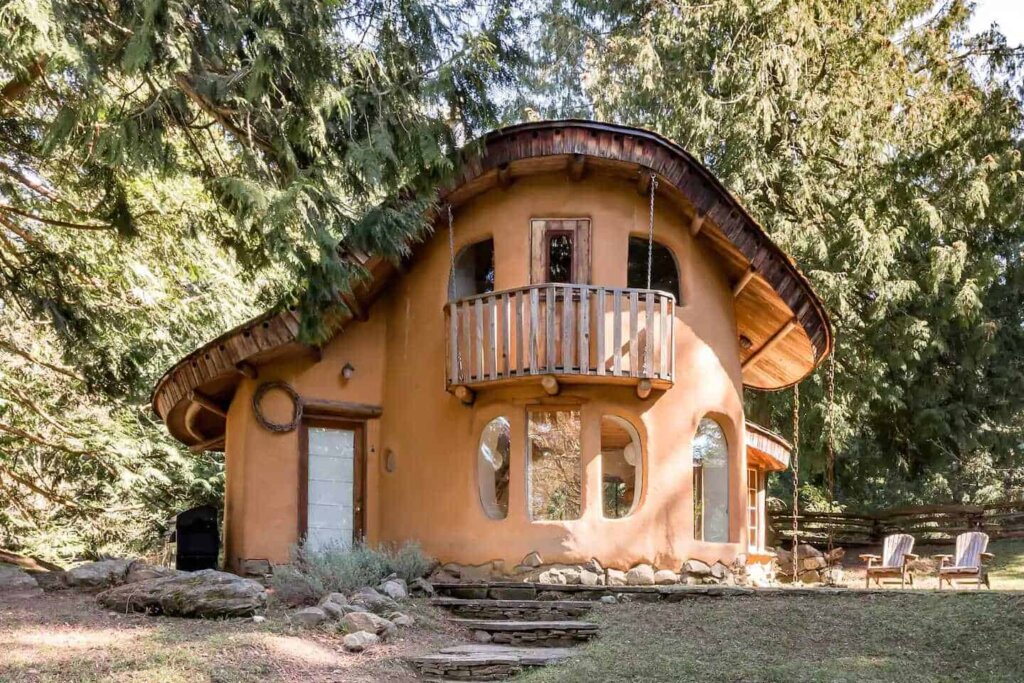
Cob houses are made from a combination of clay, sand and straw. The material — which is referred to as cob — is mixed with water and then expertly sculpted by hand. These homes are similar to adobe houses, but unlike adobe, which is formed into bricks and hardened before building, cob structures are sculpted while the mixture is still wet.
While there are no specific criteria that make a cob house sustainable, many cob builders are drawn to the practice for its connection to the natural environment. “It’s up to the designer and homeowner to decide how to best utilize cob as well as consider other ways to improve energy efficiency, responsible resource usage, and building according to individual and family needs,” Kentucky-based cob house builder Ziggy Liloia said.
“There’s a profound feeling of shelter, protection and sturdiness,” Liloia said. “Being wrapped in something handmade is a wonderful experience.”
“There’s no limit to building with cob,” Liloia added. “Houses can take on any shape, design or style, and the walls are load-bearing, so the need for framing is reduced or eliminated,” he added. Because you don’t need framing for a cob house, it eliminates the need for traditional construction techniques and disruptive equipment, and therefore, emissions. Cob house builders tend to use manual techniques for the building process, Liloia said.
The materials that make up cob houses are able to absorb and retain heat from the sun, which provides natural heating and cooling systems. Known for being durable and stable, in many ways, cob houses don’t feel like conventional homes. “There’s a profound feeling of shelter, protection and sturdiness,” Liloia said. “Being wrapped in something handmade is a wonderful experience.”
3. Passive House
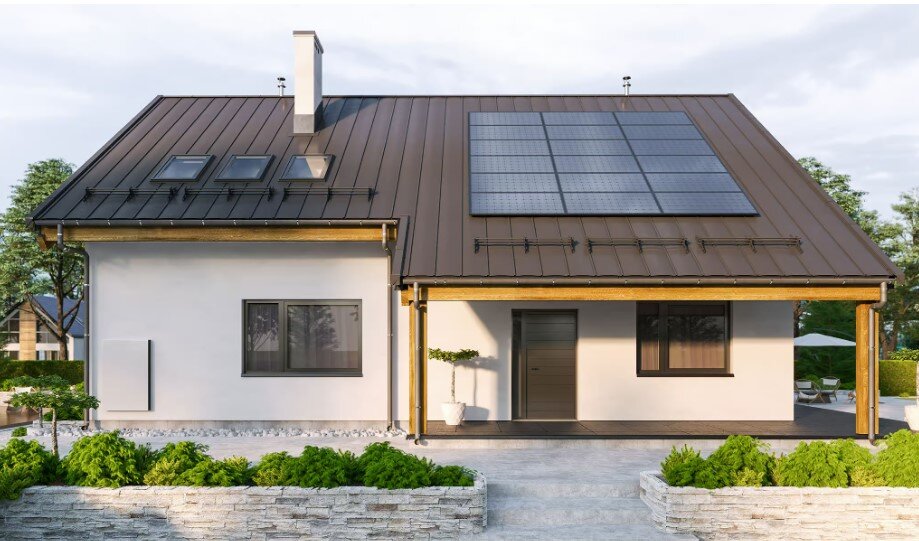
Passive homes are designed to reduce energy consumption and minimize the house’s environmental impact. This house design is becoming increasingly popular in places with colder climates, like Upstate New York.
But what does “passive” really mean here? Typically, passive houses are constructed in a way that makes them highly insulated and airtight, increasing the home’s self-sufficiency. You don’t have to rely on air conditioning or a furnace to regulate the home’s temperature.
Design features and technologies that are used in passive houses might include high-performance windows, ventilation systems that recover heat from exhaust air and efficient cooling and heating systems. Green roofs — roofs that are partially or completely covered with vegetation and can help cool the home — are often common features of passive houses.
Passive solar heating — which involves positioning the building and its windows to maximize sunlight that enters the building — is also often used in passive homes.
With all of these things in mind, in order for a home to achieve certification as a passive house, it must meet strict energy efficiency standards that are set by PHI (the Passive House Institute of PHIUS (Passive House Institute US), which includes limits on energy consumption for heating and cooling and requirements for insulation and airtightness.
4. Tiny home
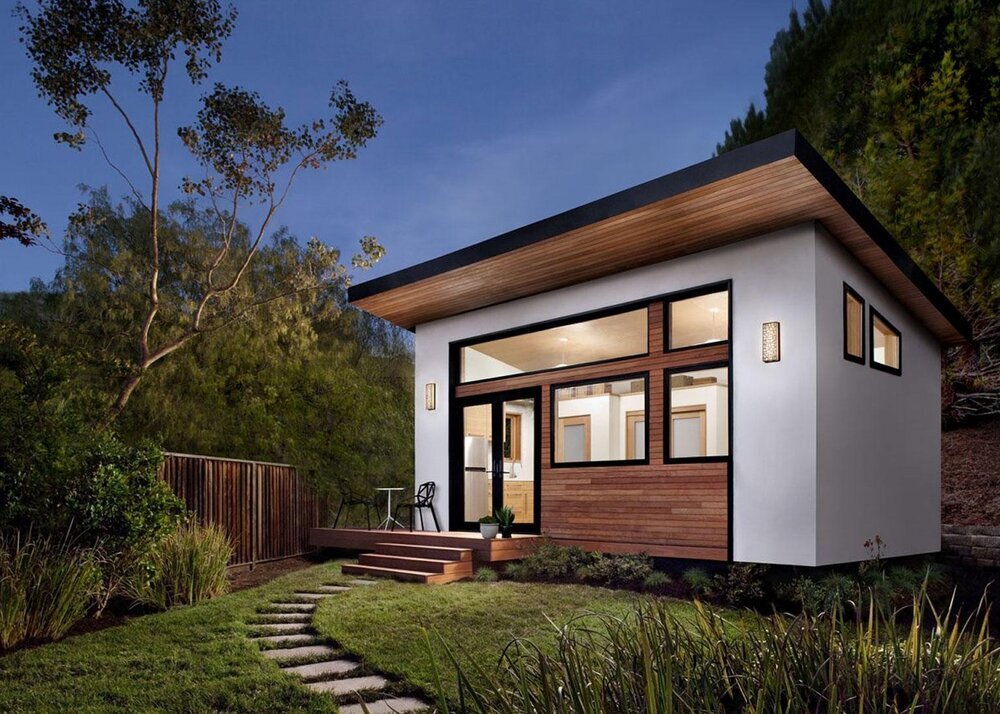
Tiny homes are compact houses that are generally 400 square feet or smaller. While not all tiny homes are built to the same green standards, their small footprint alone tends to bring obvious sustainability benefits. Owners of tiny homes typically live with less, and the house itself generally requires reduced energy usage and can offer a more affordable path to a greener lifestyle.
Maria Saxton, a Virginia-based community planner, surveyed 80 tiny home downsizers across the United States and found that overall, ecological footprints were reduced by about 45 percent, on average compared to their footprints before they downsized.
One aspect of this, of course, is that tiny homes require significantly fewer materials than their single-family counterparts to build, Dan Louche, builder and owner of Tiny Home Builders, said. The average square footage of an occupied home today is 1,753 square feet, according to Zillow research.
“This means less wood harvested from forests, less products produced in a factory, and less transportation of goods to the store and ultimately, the consumer,” he said.
In addition, tiny homes are generally much more energy efficient. This is due not only to their size, but also the way they’re constructed, Louche said. Most tiny homes are built using some of the most efficient insulations and building techniques, so they require significantly less energy to heat and cool.
“This means less wood harvested from forests, less products produced in a factory, and less transportation of goods to the store and ultimately, the consumer,” he said.
Since tiny homes are so popular, there are endless numbers of guides online on how to make yours more sustainable — whether that means using recycled material as insulation or relying on a renewable energy source, like solar power. In addition, implementing eco-friendly practices may be more affordable in a tiny home because you don’t have to fill more than 1,000 square feet of floor space.
5. Prefab Home
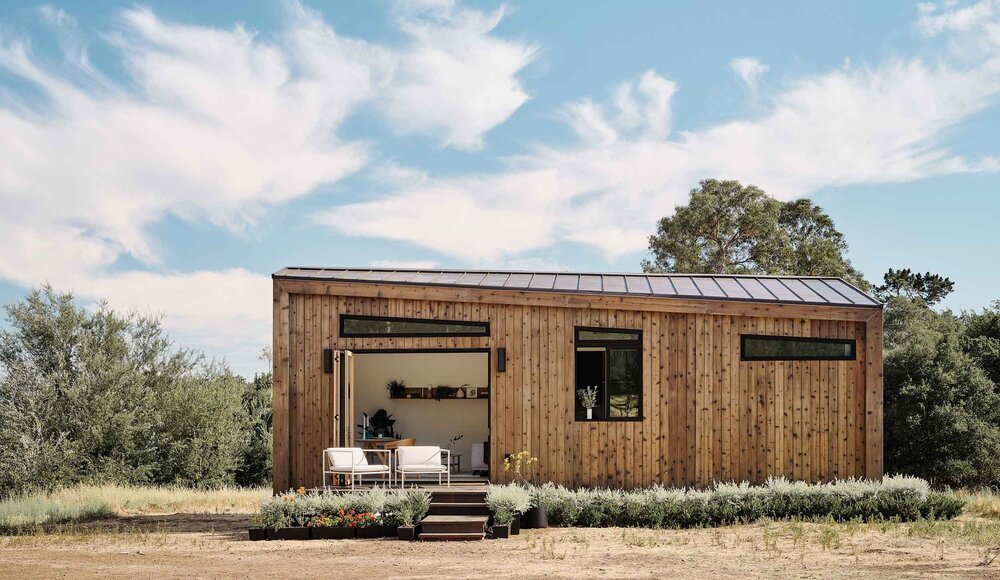
Simply put, prefab is an umbrella term that is short for prefabrication, the practice of building home parts in a manufacturing facility before transporting them to a final location for assembly. The word “prefab” might refer to modular or manufactured homes, mobile homes, container homes, kit homes — which include pre-cut pieces and are assembled like a puzzle on-site — and accessory dwelling units (ADUs).The National Association of Home Builders Modular Home Building Council assures prefab homes are held to the same quality standards and building codes as site-built homes.
Prefab homes are built with the major components, like the roof, floors and walls, constructed in a climate-controlled factory off-site. This saves on materials, time and labor costs, and ultimately helps prefab builders cut down on greenhouse gas emissions. “Materials are cut exactly to size with little or no waste, and labor works in a highly efficient assembly line, completing an entire home within eight to 12 days in the factory and another four to six weeks on location,” says Or Michaelo, the founder of The Home Gallery, which offers factory-built homes designed by architects for home buyers in California. Michaelo says his clients can expect to skip about six to seven months of construction and labor days per home.
Manufacturers of prefab homes offer a wide range of material choices that can range from traditional to eco-friendly. They also come in a variety of styles, from grand colonials to cozy bungalows. The prefab building process gives home buyers the ability to customize the design to fit their needs and preferences, meaning they can choose a builder that implements more eco-friendly practices — like using more sustainable materials like recycled wood and steel, for example, or incorporating solar energy.
6. 3D-Printed Home
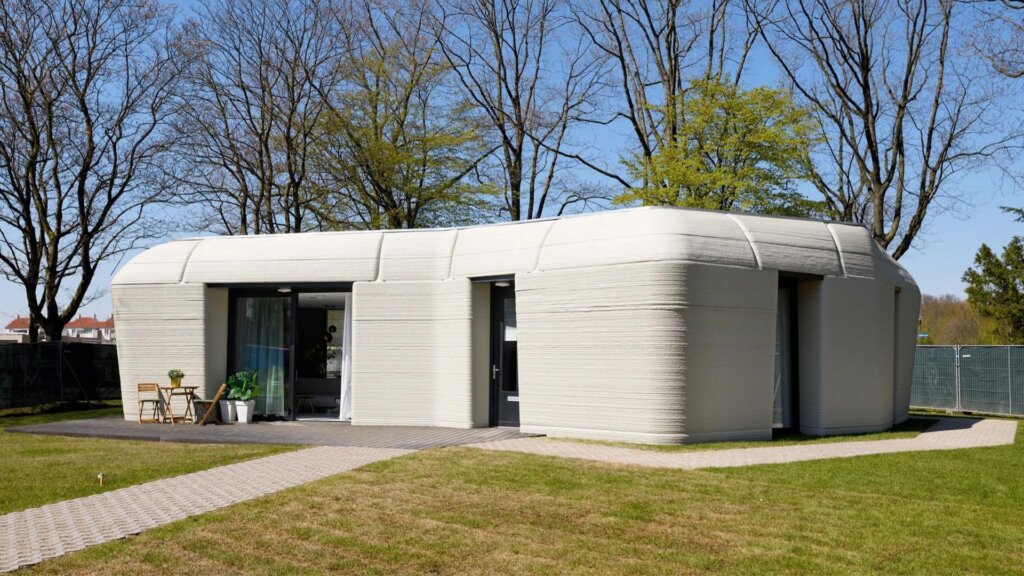
A 3D-printed home is unique because it is constructed using a 3D printer. While 3D-printing home construction has been around for nearly a decade, it’s just starting to break ground when it comes to housing in the U.S. 3D-printed home projects have popped up in places like Texas and Mexico.
In this process, a three-dimensional living space is created when the printer layers building materials on top of each other. Each element is built layer by layer to eventually make up the whole home.
The printer itself is controlled by a computer that gives the machine specific instructions for the dimensions and shapes of each section of the house. This kind of specificity and precision can be more difficult to accomplish with traditional building techniques, and oftentimes, that’s how waste is created. While 3D homes are typically not zero-waste, the supply chain, resources and logistics involved with building a 3D-printed house are generally considered more streamlined, offering a higher sustainability benefit compared to conventional home construction.
A variety of materials can be used to 3D print homes, depending on the printer that’s being used and the desired design of the house, but materials such as plastic and cement are often used in this process. Some companies are exploring more innovative materials and techniques to maximize the eco-friendliness of a 3D-printed home.
